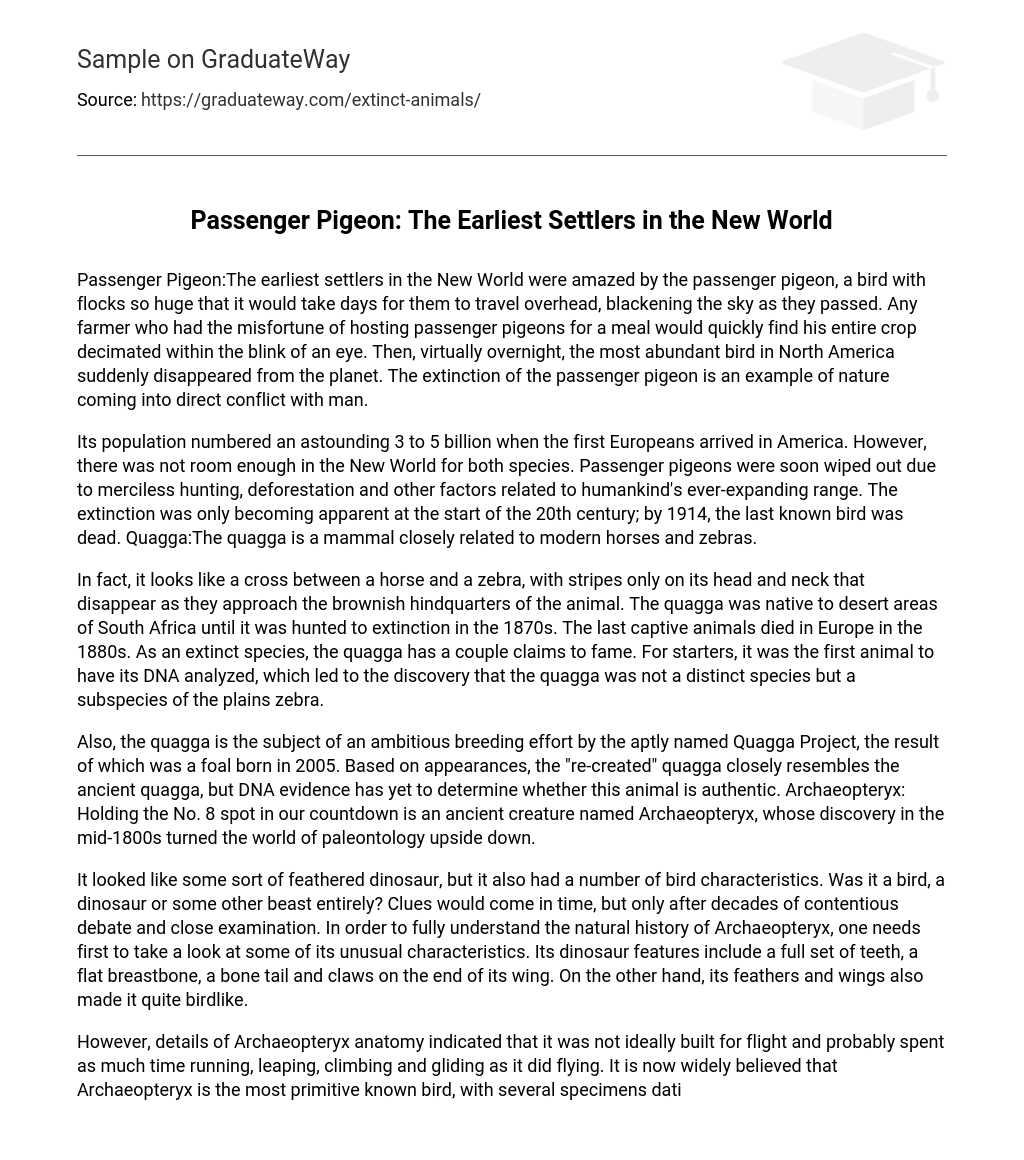Passenger Pigeon:The earliest settlers in the New World were amazed by the passenger pigeon, a bird with flocks so huge that it would take days for them to travel overhead, blackening the sky as they passed. Any farmer who had the misfortune of hosting passenger pigeons for a meal would quickly find his entire crop decimated within the blink of an eye. Then, virtually overnight, the most abundant bird in North America suddenly disappeared from the planet. The extinction of the passenger pigeon is an example of nature coming into direct conflict with man.
Its population numbered an astounding 3 to 5 billion when the first Europeans arrived in America. However, there was not room enough in the New World for both species. Passenger pigeons were soon wiped out due to merciless hunting, deforestation and other factors related to humankind’s ever-expanding range. The extinction was only becoming apparent at the start of the 20th century; by 1914, the last known bird was dead. Quagga:The quagga is a mammal closely related to modern horses and zebras.
In fact, it looks like a cross between a horse and a zebra, with stripes only on its head and neck that disappear as they approach the brownish hindquarters of the animal. The quagga was native to desert areas of South Africa until it was hunted to extinction in the 1870s. The last captive animals died in Europe in the 1880s. As an extinct species, the quagga has a couple claims to fame. For starters, it was the first animal to have its DNA analyzed, which led to the discovery that the quagga was not a distinct species but a subspecies of the plains zebra.
Also, the quagga is the subject of an ambitious breeding effort by the aptly named Quagga Project, the result of which was a foal born in 2005. Based on appearances, the “re-created” quagga closely resembles the ancient quagga, but DNA evidence has yet to determine whether this animal is authentic. Archaeopteryx: Holding the No. 8 spot in our countdown is an ancient creature named Archaeopteryx, whose discovery in the mid-1800s turned the world of paleontology upside down.
It looked like some sort of feathered dinosaur, but it also had a number of bird characteristics. Was it a bird, a dinosaur or some other beast entirely? Clues would come in time, but only after decades of contentious debate and close examination. In order to fully understand the natural history of Archaeopteryx, one needs first to take a look at some of its unusual characteristics. Its dinosaur features include a full set of teeth, a flat breastbone, a bone tail and claws on the end of its wing. On the other hand, its feathers and wings also made it quite birdlike.
However, details of Archaeopteryx anatomy indicated that it was not ideally built for flight and probably spent as much time running, leaping, climbing and gliding as it did flying. It is now widely believed that Archaeopteryx is the most primitive known bird, with several specimens dating back about 150 million years to the Jurassic Period. It is also an evolutionary link between modern birds and a group of dinosaurs that roamed the earth 150 million years ago. Thus, it is one of the most important fossil species ever found.





